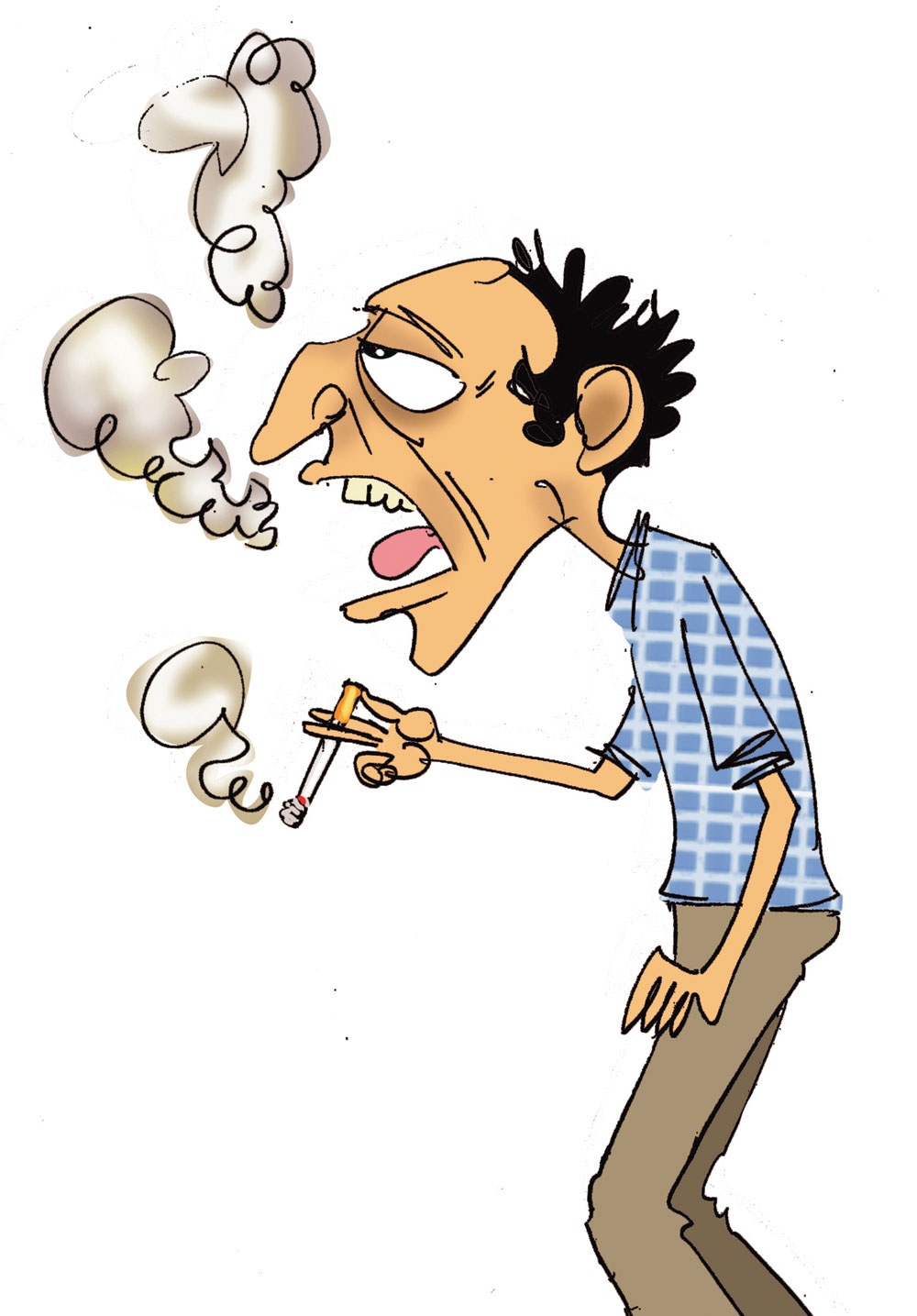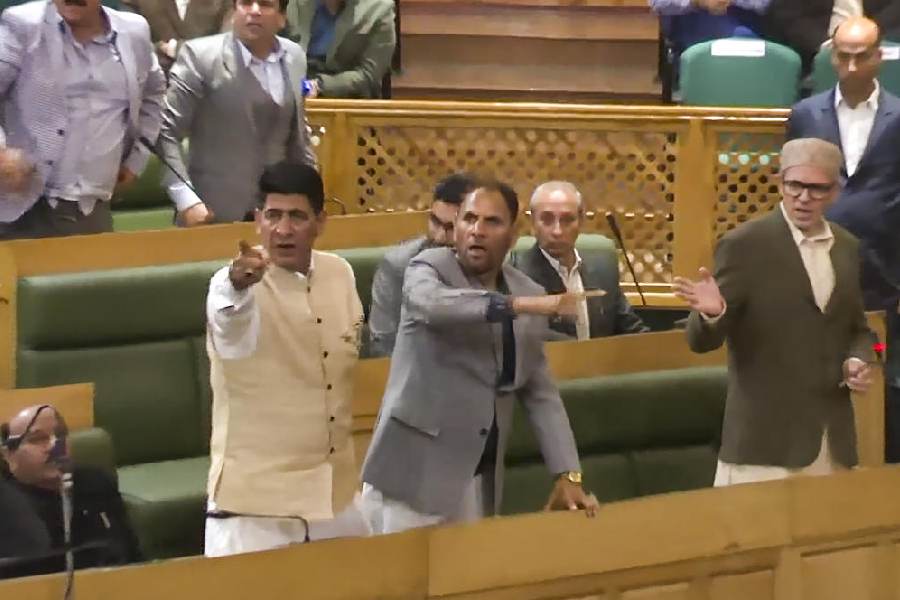Indians don’t just smoke cigarettes but also bidis, chillums and hookahs. Hookah bars are very popular among youngsters who are under the mistaken impression that passing tobacco smoke through water reduces its ill effects. Also, biofuels like wood and cow dung are still used for cooking. They release pollutants into the house and are almost as bad as cigarette smoke.
Although some people appear to smoke and have no problems, there is no such thing as a healthy smoker. The damage may be subtle but it is there nonetheless and will eventually become incapacitating.
Smoking damages the lungs directly in proportion to the number of cigarettes smoked and the total duration. The smoke irritates the smaller bronchioles (tubes ) leading to the lungs. Tenacious mucus is secreted which narrows and blocks the air-filled sacs called alveoli. The condition is aggravated further by attempts to cough out this phlegm. The alveoli get distended as air trapped inside during inspiration cannot escape. These may even burst. Oxygenation becomes inefficient, breathing is rapid and shallow. This leads to fatigue. The secretions provide an ideal medium for bacteria to grow. Frequent respiratory infections damage the lungs further. The person wheezes, splutters and coughs all day, particularly in the mornings.
A person with chronic obstructive pulmonary disease (COPD) is usually thin, unless the legs and body are swollen with fluid. Muscles are wasted and weak so endurance is poor. The fingernails may be curved upwards. The nails, lips and tongue may also have a bluish tinge. The slightest activity makes the person breathless. Day-to-day living eventually becomes difficult.
COPD is suspected if there is a history of many years of smoking or cooking on smoky stoves. Oxygen saturation of the blood can be measured with a pulse oximeter, a device that clips to the finger. The breathing pattern can be plotted with a spirometer. The chest x-ray shows a typical appearance.
COPD can result in lung cancer, heart failure and, eventually, death if it is not tackled seriously. Once the diagnosis is made, measures can be taken to reduce morbidity and improve quality of life of patient.
Treatment starts with quitting smoking — not reducing the number of cigarettes but stopping altogether. Biofuels should not be used to cook. Tablets called bronchodilators, particularly theophylline derivatives, open up the narrowed bronchi. These can be short or long-acting. Tablets reach the lungs via the stomach and blood vessels. A more efficient way is to deliver the medication directly to the lungs. Long-acting aerosol bronchodilators act for 8-12 hours while the shorter acting ones last for 4-6 hours. They can be delivered through several devices: rotahalors deliver a powdered form of the medication; inhalers are handheld and work better when attached to a “spacer”; and nebuliz-
ers require electricity but provide the medication very competently. If the oxygen saturation is low, supplemental oxygen can be given at home. There are new portable devices that function efficiently.
Corticosteroids can reduce inflammation in the lungs but they need to be used judiciously. Maintenance therapy with inhaled steroids is also efficient.
The flu vaccine should be taken every year and the pneumococcal vaccine needs to be taken at the age of 65.
Breathing exercises improve lung capacity while aerobic activity like walking improves overall health.
The writer is a paediatrician with a family practice at Vellore and author of Staying Healthy in Modern India. If you have any questions on health issues please write to yourhealthgm@yahoo.co.in










